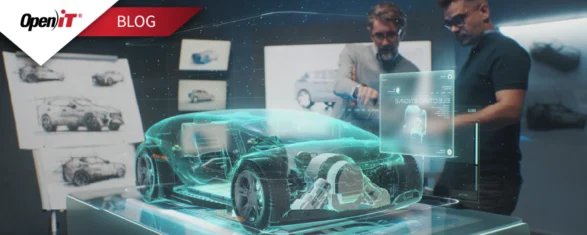A recent report forecasts substantial growth in overall IT spending, with software expenses experiencing double-digit increases. However, this surge in spending doesn’t necessarily reflect major investments in new technologies or groundbreaking innovations. Instead, a large portion of budget growth will simply offset rising costs in recurrent software spend. This highlights the critical importance of Software License Management (SLM) solutions for organizations, especially those with extensive engineering application portfolios.
Software Spending: Consistently Spiking
In 2025, global software spending is projected to exceed $1.2 trillion, a 14.2% increase from the previous year. Yet, according to John-David Lovelock, Distinguished VP Analyst at Gartner, a significant share of this spending will be dedicated to covering price increases in existing software licenses rather than funding new software acquisitions.
“In 2025, nominal spending versus real IT spending will be skewed, with price hikes absorbing some or all of budget growth.”
John-David Lovelock, Distinguished VP Analyst at Gartner
Rising software prices will consume much of the additional budget allocations, giving the illusion of increased spending while the actual value derived from software investments remains stagnant—or worse, diminishes. This trend presents a critical challenge for organizations striving to optimize their IT expenditures and maximize the return on their software investments.
Ensure Software Value Through License Optimization
In industries dependent on extensive engineering software portfolios, where annual license costs can range from tens of thousands to millions of dollars, with up to 48% of these expenditures being wasted, optimizing the utilization of these assets is critical.
Software license management solutions provide comprehensive visibility into software usage, enabling enterprises to identify underutilized licenses, eliminate redundancies, and make informed decisions about license renewals and purchases. By leveraging real-time data and advanced analytics, SLM tools support organizations’ software spend management by optimizing license allocation, reducing unnecessary expenditures, and ensuring compliance with licensing agreements.
Optimize Recurrent Software Expenses with Open iT
Open iT, a pioneer in software license management, offers LicenseAnalyzer, an advanced license optimization solution tailored to Fortune 500 companies and industry leaders across manufacturing, energy, aerospace, defense, and other engineering-intensive sectors.
Leveraging advanced data analytics, Open iT enables organizations to minimize recurrent software expenditures through precise license utilization insights and predictive resource planning.
Granular License Utilization Analytics
Aggregate detailed software usage data across on-premises, cloud, and hybrid environments. Identify user-specific engagement, session frequency, and duration to detect underutilized licenses for reallocation and cost reduction.
Dynamic License Allocation Optimization
Analyze real-time usage patterns to optimize license distribution. Adjust allocations based on demand, reducing over-provisioning and ensuring access to critical applications without productivity bottlenecks.
Predictive Cost Modeling and Forecasting
Utilize historical data and machine learning to forecast software needs, enabling strategic software spend management. Align purchases with actual usage trends to support accurate budgeting, renewal planning, and cost avoidance.
License Simulation for Strategic Decision Support
Simulate various licensing scenarios to assess financial and operational impacts. Model user behavior shifts and contract changes to guide data-driven procurement decisions and minimize costs.
IT Chargeback Mechanisms for Cost Accountability
Allocate software costs to departments based on actual usage. IT chargeback promotes cost transparency, drives responsible consumption, and encourages efficient software management to reduce recurring expenses.
The Open iT Impact
Open iT’s license utilization analysis and insights have enabled the following organizations to reduce software spending and enhance utilization efficiency for their engineering applications:
Mitta Oy
A European surveying and geotechnical consulting firm, Mitta Oy initially addressed license denial issues by purchasing additional licenses, increasing recurring software costs.
Open iT provided visibility into their license usage, revealing that their utilization did not justify the extra licenses. With Open iT’s real-time and historical reporting, Mitta Oy reduced their Autodesk licenses by up to 50% without impacting user productivity.
Burns & McDonnell
A global engineering and architecture firm in the U.S., Burns & McDonnell managed over 400 engineering applications, many of which were duplicates, inflating IT expenses. The diverse licensing models—ranging from named user licenses, subscriptions, and SaaS to concurrent licenses across on-premises, private, and cloud-hosted managers—complicated cost optimization.
Open iT’s usage analysis and reporting helped the company align usage data with financial reports, revealing the cost of time spent on each product. This insight led to a 25% reduction in software spend by identifying underutilized licenses and minimizing overall license costs for project teams.
Software License Management: A Must-Have in 2025
The financial pressures of recurrent software spending, coupled with the complexities of modern licensing models, make software license management solutions indispensable in 2025. These tools not only help control costs but also transform software management from a reactive task to a proactive strategy.
By continuously monitoring software usage and providing real-time insights, software license management enables organizations to adapt quickly to changing business needs, optimize resource allocation, and ensure that every dollar spent on software delivers tangible value.
Contact Open iT today and discover how we can optimize your recurrent software spending in 2025 and beyond.






